
29-12-2025 17:44
Isabelle CharissouBonjour,J'aimerais savoir si d'autres personnes au

29-12-2025 17:12
 Bernard CLESSE
Bernard CLESSE
Bonjour à toutes et tous,Pourriez-vous m'aider à

12-11-2021 00:03
Lepista ZacariasHi everybody,A week ago in my fiels trip I noticed

29-12-2025 17:01
Gernot FriebesHi,I'm looking for help with this hyphomycete with

29-12-2025 08:30
Hello.A tiny ascomycete sprouting under Juniperus

29-12-2025 10:15
Hulda Caroline HolteHello, I found and collected this propoloid ascom

29-12-2025 09:38
Oskari VirtanenHi,could anyone help me identify this, I suspect P
Aquatic ascomycete.
Josep Torres,
13-06-2025 09:41
A cerebriform ascomycete sprouting scattered on the surface of a trunk submerged in a clear stream.
Ascomata measuring up to 4 mm long and 2 to 2.5 mm wide, I was particularly struck by how tough and tenacious these ascomata were.
Very thin conidiophores arranged parallel in a palisade-like pattern produce globose conidia with a large lipid droplet inside that occupies three-quarters of the spore.
An amyloid reaction is observed from the base to the middle of the hymenium with Melzer's Reagent.
No apparent reaction to KOH.
Some of the images show clusters of these supposed conidia, which I wouldn't completely rule out asci.
These presumed conidia measured in water:
(3.6) 3.8 - 4.4 (4.7) × (2.9) 3.2 - 3.8 (4) µm
Q = 1 - 1.3 (1.4) ; N = 40
Me = 4.1 × 3.6 µm ; Qe = 1.1
I admit I don't even know where the air is coming from.
Any opinions would be welcome.
Thank you very much in advance.
Best regards.
Josep Torres,
17-06-2025 14:09
Re : Aquatic ascomycete.
Any suggestions.......
Josep Torres,
20-07-2025 14:34
Francois Guay,
22-07-2025 18:39

Re : Aquatic ascomycete.
Very interesting, thank you for the follow-up!
Hans-Otto Baral,
26-07-2025 09:29

Re : Aquatic ascomycete.
Hi Josep
by accident I looked again in your thread. What a shame that I did not realize this being an Ascocoryne! Now the things are clear thanks to your DNA analysis.
I annotated your tree below but could not name all clades because GenBank is presently out of order.
As your sample is identical with OP023244, I conclude that it is also identical with a Polish sample on Salix not in GenBank (BRA CR32406), which had both conidiomata and apothecia, the latter regrettably overmature. It is so far the only case with apothecia within this "laurisilvae-clade".
A. laurisilvae is only known from its anamorph. It looks very much like yours, despite the genetic distance (see below).
Do you have any idea about the substrate? It looks like a deciduous tree. Do you have the wood to check its anatomy?
I would be pleased to receive the collection data, also the sequence and its ab1 file. And it would be great if we could use your photos in our work. Do you have a scale for your pics?
by accident I looked again in your thread. What a shame that I did not realize this being an Ascocoryne! Now the things are clear thanks to your DNA analysis.
I annotated your tree below but could not name all clades because GenBank is presently out of order.
As your sample is identical with OP023244, I conclude that it is also identical with a Polish sample on Salix not in GenBank (BRA CR32406), which had both conidiomata and apothecia, the latter regrettably overmature. It is so far the only case with apothecia within this "laurisilvae-clade".
A. laurisilvae is only known from its anamorph. It looks very much like yours, despite the genetic distance (see below).
Do you have any idea about the substrate? It looks like a deciduous tree. Do you have the wood to check its anatomy?
I would be pleased to receive the collection data, also the sequence and its ab1 file. And it would be great if we could use your photos in our work. Do you have a scale for your pics?
Very strange is the amyloid reaction, we did not see that in any anamorph of Ascocoryne!
Zotto
Josep Torres,
26-07-2025 17:18
Re : Aquatic ascomycete.
Hello Zotto.
Thanks for your prompt response.
You already have everything in your email.
Best regards.
Thanks for your prompt response.
You already have everything in your email.
Best regards.


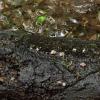
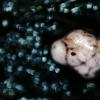
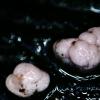

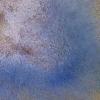
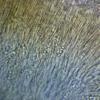
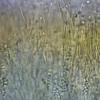
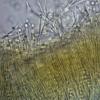
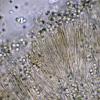
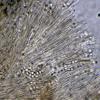
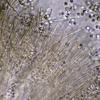

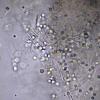
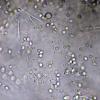
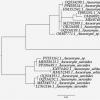
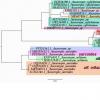
 Ascocoryne-laurisilvae-Mateos-amp-Pena-Lastra-2024-1-0001.jpg
Ascocoryne-laurisilvae-Mateos-amp-Pena-Lastra-2024-1-0001.jpg